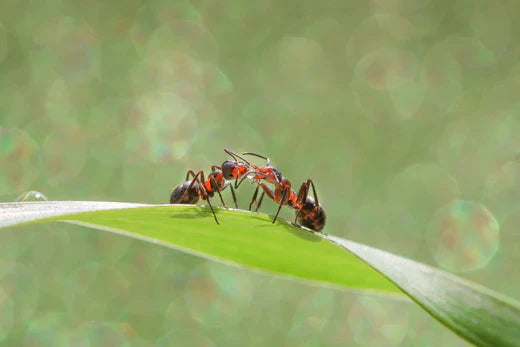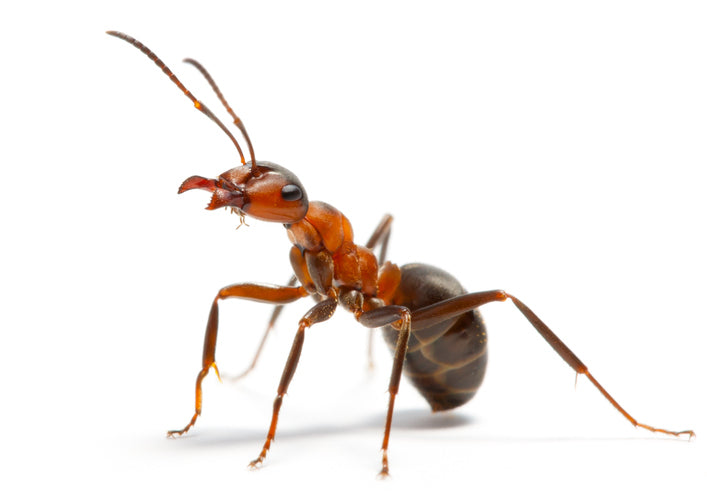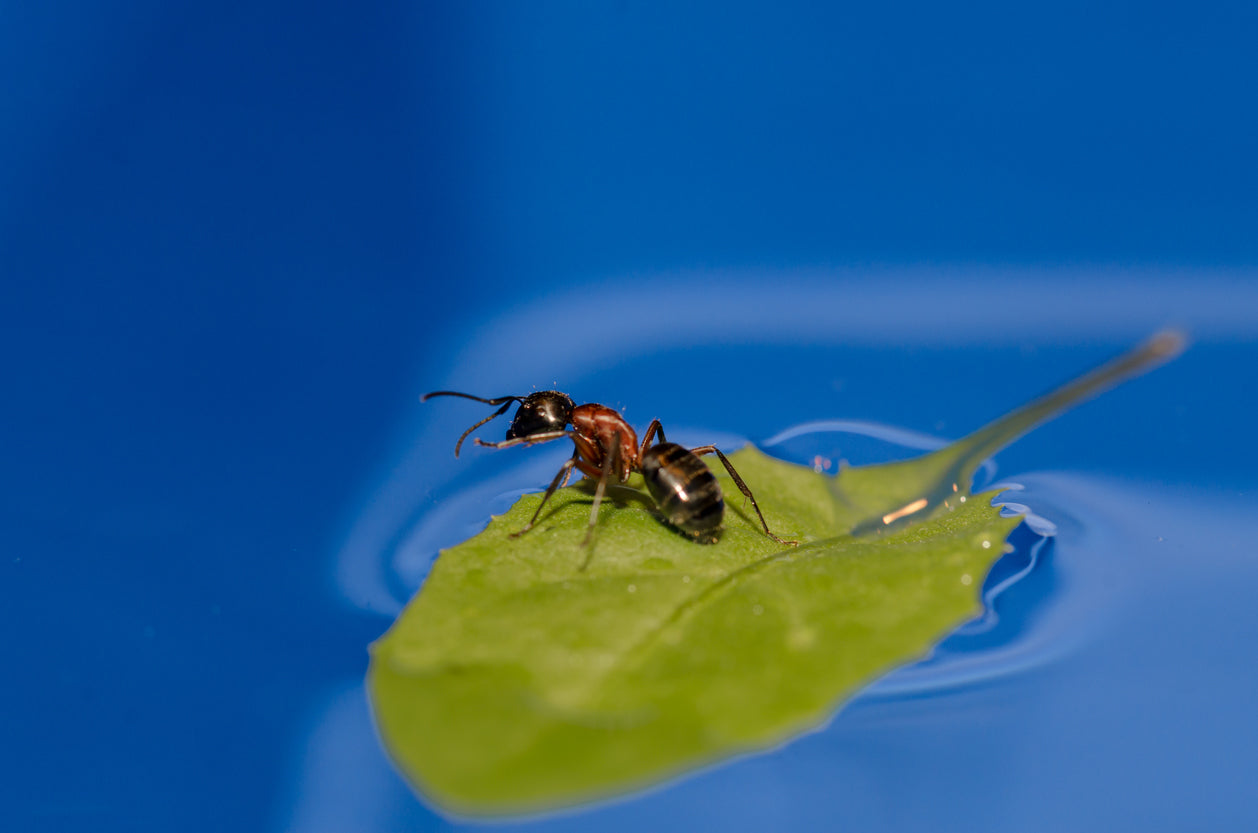Add description, images, menus and links to your mega menu
A column with no settings can be used as a spacer
Link to your collections, sales and even external links
Add up to five columns
Add description, images, menus and links to your mega menu
A column with no settings can be used as a spacer
Link to your collections, sales and even external links
Add up to five columns

Fun and Interesting Ant Facts for Kids
By Spencer McManamna March 25, 2024 7 min read
10 Fun and Interesting Ant Facts for Kids
Hello, curious minds! Are you ready to embark on an exciting journey into the tiny but mighty world of ants? Prepare to be amazed as we dig into some incredible facts about these industrious insects!
Ants may seem small, but don't let their size fool you. These tiny creatures are some of the most fascinating and hardworking insects on the planet. From their impressive teamwork to their complex societies, ants have captured the imagination of scientists and nature lovers alike for centuries.
Join us as we delve into the secret lives of ants, uncovering amazing secrets that will make you see these miniature marvels in a whole new light. From their remarkable communication skills to their extraordinary strength, there's so much to discover about these incredible insects. So grab your insect magnifying glass and let's get ready!
1. Ants Have Two Stomachs
Ants have two stomachs: one personal and one social! Stomach functionality in ants extends beyond individual consumption and digestion, enabling them to store and share food with their colony mates through a remarkable process called trophallaxis.
Trophallaxis in Ants
One fascinating aspect of stomach functionality in ants is their ability to engage in trophallaxis, which is the mutual exchange of food and liquids among colony members. During trophallaxis, ants regurgitate liquid food from their crop to feed nestmates, allowing for the efficient sharing of resources within the colony.
Benefits of Trophallaxis in Ant Colonies
In ant colonies, food sharing through trophallaxis serves several important functions. Trophallaxis facilitates the distribution of nutrients throughout the colony, ensuring that all members, including larvae, workers, and the queen, receive adequate nutrition. It also promotes social cohesion and communication within the colony.
Through trophallaxis, ants exchange not only nutrients but also chemical signals known as pheromones, which play a crucial role in coordinating colony activities such as foraging, nest maintenance, and defense. Finally, it allows for the efficient recycling of nutrients within the colony. Ants can regurgitate and re-ingest food multiple times, extracting as much nutrition as possible from available food sources!
2. Ants Do Not Have Ears
Ants have the incredible ability to "hear" ground vibrations, even though they have no ears! They do this with the use of specialized sensory structures known as subgenual organs.
Subgenual Organs
Subgenual organs are sensory structures located in the legs of ants, specifically in the middle and hind legs. These organs consist of specialized sensory receptors that are sensitive to vibrations transmitted through the ground. When vibrations occur, the subgenual organs detect the changes in pressure and send this information to the ant's nervous system, allowing it to perceive and respond to its environment.
Ground Vibrations and Ants
Ants can detect ground vibrations caused by various sources, including the movement of other ants, predators, or even environmental disturbances such as wind or rain. These vibrations carry important information about the ant's surroundings and play a crucial role in their communication, navigation, and detection of potential threats. In addition to subgenual organs, ants also utilize other sensory structures, such as body hair and antennae, to feel vibrations. Fine hairs covering an ant's body, particularly on its legs and antennae, can detect subtle changes in air movement and ground vibrations!
3. Ants Do Not Have Lungs!
Ants do not need a complex respiratory system like we do! This is due to many reasons, such as their tiny body size and their limited oxygen requirements. Instead of lungs or gills, ants have a network of tubes called tracheae that branch throughout their bodies. These tracheae deliver oxygen directly to the insect's tissues and remove carbon dioxide. These tracheae are connected to openings known as spiracles which are located along the sides of the ant's abdomen. Despite the lack of complexity, this system offers one major advantage, which we will discuss below!
4. Ants Are Underwater Survivalists
Ants have the ability to open and close their spiracle openings, essentially giving them the ability to hold their breath! Their tiny bodies are so effective at conserving oxygen that most ants can survive being submerged underwater for 24 hours!
Water Temperature
The warmer the water is, the better the ant becomes at surviving, as higher water temperatures make it easier for them to obtain oxygen from the surrounding liquid. Ants are so resilient in water that they can survive temperatures of up to 150 degrees Fahrenheit!
Floating Rafts
Some ant species have the ability to swim, due to elongated legs or similar qualities. Other ant species have a much more cooperative gift: the remarkable ability to form floating rafts using their own bodies. When their nest or habitat becomes submerged in water, ants will instinctively gather together and link their bodies to form a buoyant structure. The ants interlock their legs and bodies, creating a stable platform that floats on the water's surface. The ants at the bottom of the raft are often tightly packed and act as anchors, while those on the sides maintain the structure and provide buoyancy.
Living Bridges
That's not the only clever construction ants can create: some species interlock their individual members together to make living bridges that allow for movement and foraging across gaps or streams!
5. Ants Leave Invisible Trails Everywhere They Go
Pheromones are chemical substances created by animals, including insects, to communicate with others of the same species. These chemicals are often used to convey information about food sources, mating opportunities, alarm signals, and trail marking, among many other things. Pheromones are detected by other individuals of the species through sensory organs such as antennae or other specialized receptors.
Pheromones in Ant Colonies
In ant communities, pheromones play a crucial role in organizing and coordinating various activities, maintaining social cohesion, and regulating behavior. They will use pheromone trails to lead other ants to food sources, as well as mark the territory of rival colonies. Pheromones are also used to designate the social status of ants within their own individual colonies!
6. There Are a LOT of Ants on the Planet
It is estimated that there are roughly 20 quadrillion individual ants on the planet - that's equal to 20 million billion, or 20 followed by 15 zeros! That many ants equates to around 20 megatons in weight, which is itself equal to 20 million tons! To put that in perspective, that's about the same weight as 100,000 blue whales or 5 million elephants!
7. Ants Outlived the Dinosaurs
It's hard to believe, but ants first appeared during the Jurassic period, around 100-140 millions years ago! That means that they lived alongside the dinosaurs! Fossil evidence suggests that these ants were even smaller than the ones we know today, and had simplified biology and colony behaviors compared to modern ants. Ants were among the lucky species to survive the asteroid impact at the end of the Cretaceous period 66 million years ago that wiped out the non-avian dinosaurs.
8. Queen Ants Can Live Up to 30 Years
Some species of queen ants can live for 10 years or more, while others may have lifespans closer to several decades. While harvester ant life cycles typically last several weeks or months, Queen ants have the potential to live up to 30 years! The longevity of queen ants is often attributed to their larger size, robust physiology, and reduced exposure to environmental risks compared to worker ants.
Reproductive Phases of Queen Ants
During their lifespan, queen ants go through distinct reproductive phases. After mating with male ants during a nuptial flight, the queen establishes a new colony and begins laying eggs. During the initial phase of colony founding, the queen's reproductive output may be relatively low. However, as the colony grows and matures, the queen's egg-laying rate typically increases, peaking during the colony's most productive phase. As queen ants age, their reproductive capacity may decline. Egg production may slow down, and the queen may produce fewer viable offspring.
Supersedure
In some cases, older queen ants may be replaced by younger queens produced within the colony through a process known as supersedure. Supersedure ensures the continuity of the colony's reproductive function and genetic diversity.
Queen Ants and Colony Survival
When a queen dies or becomes unable to fulfill her reproductive duties, the colony's survival may be jeopardized. In response, worker ants may attempt to rear new queens to replace the old one, or the colony may decline and eventually perish if no suitable replacement is available. Queen ants play a crucial role in colony founding, growth, and maintenance, and their longevity is essential for the long-term success and sustainability of ant colonies.
9. Ants Are Very Intelligent
Ants, despite their small size and relatively simple nervous systems, exhibit a range of advanced cognitive abilities that contribute to their success as highly social and organized insects. While individual ants may not possess the same level of cognitive complexity as larger-brained animals like mammals, collective ant colony behaviors and interactions within colonies demonstrate remarkable intelligence.
Social Intelligence
Ant colonies exhibit sophisticated social structures with division of labor, communication systems, and cooperative behaviors. This organization requires ants to recognize and respond to the needs of the colony as a whole, demonstrating a level of social intelligence.
Complex Problem Solving
Ants are capable of solving complex problems and adapting to changing environmental conditions. They demonstrate the ability to navigate obstacles, find food sources, and overcome challenges using trial and error, learning from experience, and sometimes even innovative strategies.
10. Ants Have Symbiotic Relationships
Ants have symbiotic relationships with various organisms, which provide mutual benefits to both parties involved.
Ants and Fungi
Certain ant species, such as leaf-cutter ants (genera Atta and Acromyrmex), have evolved complex agricultural systems where they cultivate fungus gardens for food. The ants collect leaf fragments and other plant material, which they bring back to their underground nests. They use these materials to cultivate specialized fungi, known as "attine" fungi, within their nests. The cultivated fungi serve as the ants' primary food source.
In return, the ants provide the fungi with optimal growing conditions, protection from pathogens, and nutrient-rich substrates. This mutualistic relationship between ants and fungi has evolved over millions of years, resulting in a highly sophisticated system of agriculture within ant colonies.
Ants and Aphids
Some ant species, such as carpenter ants, engage in a mutualistic relationship with aphids, small sap-sucking insects that feed on the sap of plants. The ants "tend" the aphids by protecting them from predators, such as ladybugs and parasitic wasps, and moving them to new feeding sites. In return, the aphids secrete a sugary substance called honeydew, which the ants consume as a food source. The ants receive a readily available food source, while the aphids gain protection and transportation to new food sources!
Discover More Fun and Interesting Ant Behaviors with Insect Lore!
Ready to discover the incredible cooperation and teamwork of ants with your very own eyes? Check out our Ant Mountain™ with Tube of Live Ants!
Related products
Also in Ants

The Ultimate Guide to Raising Harvester Ants
December 01, 2025 10 min read
Meet the Harvester Ant! This guide will walk you through the process of raising your very own, from setting up your ant farm to feeding, care, and troubleshooting. Whether you’re a teacher running a classroom science project or a parent starting a fun nature activity at home, this is everything you need to know to raise a thriving colony.

What Ants Can Teach Us About Working Together
March 19, 2025 6 min read
Just as ants collaborate, relying on communication and coordination to complete complex tasks, humans thrive when working together, each individual bringing unique skills and perspectives to the table. In this article you will learn all about how ants work together, and what it can teach us about teamwork!

How Long Can Ants Live Without Food?
November 04, 2024 4 min read
You may know about the wide variety of foods ants like to munch on, but have you ever wondered how long they can go without a meal? The answer may surprise you! If you've got an appetite to learn more, let's dig in.

Enter Your Voucher Code Below
If you are experiencing difficulty redeeming your voucher on your desktop, please use a mobile device for a better redeeming experience.

We are unable to combine redemption fees. If you are redeeming 1-5 voucher codes, please complete separate purchases through our website for each voucher. If you are redeeming 6+ vouchers, please email us at customerservice@insectlore.com with your voucher codes and shipping address and we'll send you a custom invoice for payment.
Thank you for Redeeming your voucher!
You redeemed a $title

Don't miss this special one Time Offer.
Check the Box to Add this Special Offer to your Cart

Don't miss this special one Time Offer.
Check the Box to Add this Special Offer to your Cart
It looks like you are an Insect Lore UK/EU customer! You are visiting the Insect Lore USA website.
Click Insect Lore UK/EU website to be redirected to insectlore.co.uk.




